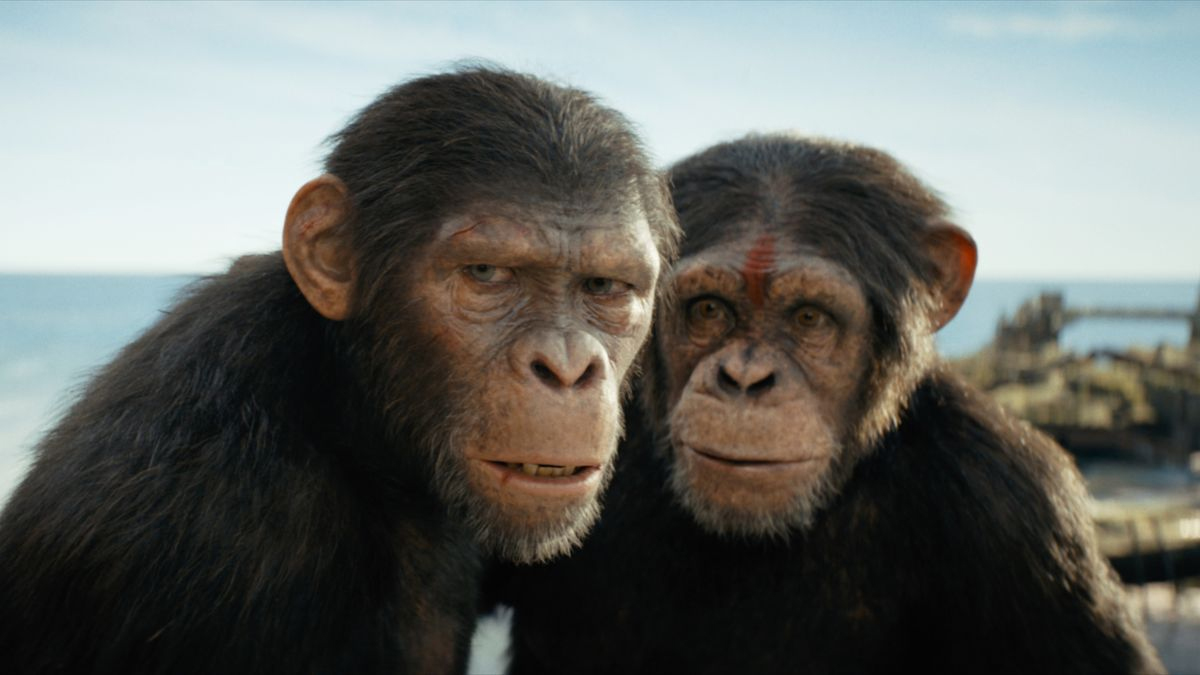4DX a great addition to apes’ latest ‘Kingdom’

 (June 13, 2024) — When I went to the Regal Fresno Riverpark for the first time in May 2023. I noticed that one of its theaters had something called 4DX. I did not see a movie there, but after doing research, I could not believe I had not heard about it before.
(June 13, 2024) — When I went to the Regal Fresno Riverpark for the first time in May 2023. I noticed that one of its theaters had something called 4DX. I did not see a movie there, but after doing research, I could not believe I had not heard about it before.
Films released into 4DX theaters must undergo considerable post-production treatment. Sadly, the filmmakers themselves don’t do this, but rather the company responsible for 4DX technology. Once a film is completed, the company must decide which 4DX effects to use and during which portions of the movie.
They have their choice of wind, snow, water, scent, heat, lightning, fog, smoke and seat motion. I won’t get into the nuts and bolts of the technology, but I will highlight what works and what does not.
I loved all three of the most recent “Planet of the Apes” films. The CGI was always flawless; the apes never looked anything less than 100% real. Surprised as I was to find out a new film in the series was coming out, I knew I had to see it.
Dominant species
“Kingdom of the Planet of the Apes” takes place many generations after the previous trilogy ended. Caesar (Andy Serkis) is seen as a messiah by all the apes, who have now usurped humanity as the dominant species on the planet. His descendants worship him in different ways. Some groups have twisted his words and use them to justify their attacks and assert authority over others. Sound familiar?
Noa (Owen Teague) is an adolescent ape who discovers a human named Mae (Freya Allen), who is very concerned that some of the rogue apes are trying to utilize human technology for their own gains. Upon capture, Noa and his friends must decide whether to help her or not. The plot isn’t the greatest, but once again, we care about the characters and their cause.
The cinematography is fantastic. Beautiful scenery and camera work are the norm for this film. The 4DX seat motion enhances every aerial shot. The seat slowly moves in whatever direction the camera moves.
If a character dodges an arrow or a punch, the seat may move quickly in the same direction. When the apes are on horseback, the seat jerks back and forth. Anytime there is a chase scene, the seats jolt violently. I was not a fan of this part of the technology. Perhaps it was because every preview shown before the film made use of the seat shakes and bounces. I had spilled my soda and was already feeling slightly nauseous before the film even started.
Stormy weather
There are a lot of water scenes in the film, so little jets on the back of the seat in front of you will spray mist on you at appropriate times. This is the only 4DX feature that has an on/off button on the armrest. During stormy scenes, bursts of cold wind flowed through the theater. I found this feature to be tremendously engrossing.
I expected some sort of warm blast during the fire scenes, but I was disappointed. The fog apparatus released fog right below the screen and definitely created a 3-D smoke effect. However, the machine was way too loud and distracted me from what was going on in the movie.
If lightning hit in the film, large flashes went off around the periphery of the theater. They also occasionally used forest scents to make the theater consistently smell of trees. When the characters were inside musty buildings, the scents were very fitting. I never noticed any ocean/beach scents, though.
Quite possibly the best feature is the movement of the back of the seat. If a character got grabbed from behind, I would feel a little “poke” in my back. If a character fell, the back of the seat would rumble. These instances heightened a lot of the suspense in the film.
All-in-all, I found the 4DX technology to be well worth the $25 ticket. “Kingdom of the Planet of the Apes” is a perfect film in which to experience 4DX. I look forward to going to the Dublin location to see another film in the format. Film: A- Film+4DX: A
‘Violent Nature’ is just plain bad
During a horror film, the director often chooses to follow the point of view of the killer/villain for one or more scenes.
Several of famed Italian director Dario Argento’s films spend a lot of time behind the “mask” of the killer. “Friday the 13th” films often put the audience in Jason’s shoes as he does his business. Yet, because the audience identifies more with the hapless regular people in these films, directors tend to spend most of the time telling their stories.
In Chris Nash’s debut feature, “In a Violent Nature,” the audience has to spend nearly every minute with his hulking killer. It’s a neat concept. It is just too bad that the killer’s story is abjectly boring and cliché.
It opens with a fixed camera position focusing through the window of a rundown shack in the woods. We hear dismembered voices coming from all angles. With the trite dialogue, it is obvious we are listening to a few moronic, twentysomething males. We never see them, but right before they leave, one of them reaches in and takes a necklace off a post.
At this point, we assume a cut and then another scene. Perhaps a scene of the gentlemen screaming down the highway, necklace in hand, espousing more inane dialogue. But no, Nash holds the shot … and holds it … and holds it. After what seems like several minutes, the angle changes and something comes crawling out of the ground. Seen only from the back, it is clear this monstrosity is a long-dead spirit somehow connected to the necklace.
Slow moving video game
Of the 87-minute runtime, I would say a good 60 minutes is spent with the camera following Johnny (the walking corpse) as he tramples and stomps – never in a hurry – through the forest. Most of the time, I felt like I was playing a video game where my character was slow-moving and I had to walk from one far-away place to another. Not the most exciting part of a game, and it does not work in a film either. Even when it is clear he is stomping his way toward a good killing, there is zero tension.
Using only diegetic (on-screen) music for the soundtrack, we get no suspense-building score. We also get no cool editing tricks or smart camera work. What we do get is a half-dozen or so completely idiotic characters, ridiculously poor acting and an extremely weak script.
The one saving grace for gorehounds is that there are a few extremely graphic kills – including one that is guaranteed to have never been seen in a film before.
Kudos to Nash for trying something unique. Notes to Nash for next time: Give the guy you spend the entire movie with a story worth caring about. D+

Jeff Mellinger
Jeff Mellinger is a screen writer and film buff. He holds a BA in Film Studies and an MFA in film production. He lives in Concord.
